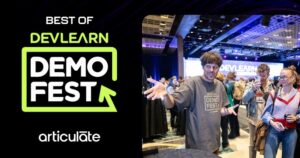Juan had successfully passed all the eLearning modulesfocusing on traffic safety, he’d read the manual, and he’d passed the testcertifying his knowledge. Juan was confident he could expertly navigate thebusy Mexico City traffic on his delivery motorcycle without incident. His jobas a delivery courier required him to be fast, but his employer also wanted himto be safe. Due to the dangerous nature of the job, one or two couriers areseriously injured every year, some of them fatally.
As Juan eased his motorcycle into traffic, all was well. Heconfidently flowed with traffic, obeyed traffic laws, and was making good time untilhe noticed something out of the corner of his eye. He saw a man tenuouslyholding on to an enormous bunch of brightly colored balloons, some in the shapeof animals. Juan only looked at the man and his balloons for a second. When helooked back to the road, he was seized with panic. A large truck pulled infront of him. It was too close, he couldn’t turn. His heart rate increased, hispalms instantly became wet, and he involuntarily screeched as everything wentblack.
Fortunately for Juan, this was a virtual reality trainingexercise and, although he was safe, the physical and emotional reactions he hadwhen he saw the truck were as real as if he’d been on an actual bike in theactual streets of Mexico City.
Presence and immersion
One of the reasons for Juan’s visceral and emotionalresponse, or that of any learner in the above scenario, is due to whatresearchers call “presence” and “immersion.” While the two terms are often usedinterchangeably, as related to virtual reality they are two different concepts.Researchers Chris Wilson and Alessandro Soranzo describe the two differentconcepts this way: “Immersion is anobjective description of the technical capabilities of the VR system thatdescribes the level of detail with which a virtual environment can be rendered,while presence describes the user’spsychological response to said environment” (emphasis ours). Another way to think of it is thatdifferent learners can experience different levels of presence in an environmentwith the same level of immersion, depending on a range of factors such as stateof mind or previous level of learning (see Wilson and Soranzo in References).
While a great deal of effort has gone into ensuring that technicalissues with VR are addressed from the hardware and software perspective, thebigger issue for those who design instruction is to help create the sense ofpresence necessary to make the virtual environment feel real to the learner. IfJuan is not caught up in the sense of actually being on the motorcycle andmaneuvering through the streets of Mexico City, his reaction to the suddenappearance of an obstacle might not be as visceral or memorable. The learningopportunity would be lost. In fact, as Julia Diemer and co-authors write: “Presenceis commonly regarded as a necessary mediator that allows real emotions to beactivated by a virtual environment” (see References).
In thepsychological literature on the subject of presence, there appear to be two differentgeneral approaches or models for creating a sense of presence. One is adescriptive model and the other is a structural model. The descriptive modelfocuses on the individual elements that create the sense of presence. Theseappear to be spatial presence, involvement, and realness. The structural modelattempts to explain the sense of presence through an understanding of how theexperience of presence is generated in a person’s mind. Structural models ofpresence focus on cognitive processes and suppose that directing attention tothe VR environment and creating a mental representation of the environment arenecessary processes that enable a person to experience the sense of presence (seeDiemer, et al, in References).
In either case,designers of instruction must work to design an environment and a situationwith the VR scenario where the learner feels they are actually participatingmeaningfully within the VR learning environment.
Situated cognition
Meaningful participation is a hallmark of the instructionaltheory known as “situated cognition.” Situated cognition is a theory ofinstruction that suggests learning is naturally tied to authentic activity,context, and culture (see Brown, et al, in References). And, of course, one canuse virtual reality to create an authentic activity, context, and culturalexperience using computer-generated techniques. The idea behind situatedcognition is that the person and the environment in which they are learningcannot be separated in any analysis of learning. They are each part of amutually constructed whole, and a person’s knowledge is embedded in thecontext, culture, and tasks where the knowledge is learned.
If any learning is to take place, it needs to be conductedin the environment in which it will be applied. This is because it’s believedthe environment and the person’s perception of the environment are part of thesame learning process (see Gredler in References). To grasp information andknowledge, learners need much more than abstract concepts and self-containedexamples; they need to be exposed to the use of the information and cognitivetools in an authentic activity. Authentic activities provide learningopportunities in a way that textbook examples and declarative explanationscannot (see Gredler). This makes VR a near-perfect medium for the applicationof the learning theory of situated cognition—because any environment or contextneeded can be digitally created.
Situated cognition supports learning in a domain by enablingthe learner to acquire, develop, and use cognitive tools in an authenticactivity. Adhering to the theory, the designer of instruction would attempt toenculturate the learner into authentic practice situations through activity andcontext-related tasks and outcomes. With a VR environment, the learner would havethe opportunity to rehearse behaviors and obtain feedback from within theenvironment in which they are applying the skills. The challenge for thedesigner of VR instruction is to create a learning environment as similar tothe actual work environment as possible while not losing sight of the conceptsof immersion and presence.
Conclusion
As designers of instruction working within the deliverymethod of virtual reality, we must strive to create meaningful instruction tohelp learners assimilate new ideas, concepts, and skills within the realitieswe create. If we want the experiences we create to lead to positive learningoutcomes, we need to keep in mind the concept of presence, the role ofimmersion, and the need to think about situated cognition and how context,culture, and authentic activities play a role in learning. It’s not just thetechnology, but also the careful application of the theories and researchbehind the technology that creates effective learning.
Note: The contentfor this article is drawn, in part, from Karl Kapp and Tony O’Driscoll’s book Learning in 3D: Adding a New Dimension to Enterprise Learning and Collaboration.
From the Editor
Presence, immersion, and the current and future use of virtual,augmented, and mixed realities will be covered in depth at The eLearningGuild’s 2017 Realities360 Conference, July 26 – 28 in San Jose, California. Dozens ofsessions and over 40 expert speakers are scheduled. Seating is limited, so registertoday!
References
Brown, John Seely, Allan Collins, and Paul Duguid. “Situated Cognition and the Culture of Learning.” EducationalResearcher, Vol. 18, No. 1. January – February 1989.
Diemer, Julia, Georg W. Alpers, Henrik M. Peperkorn, YoussefShiban, and Andreas Mühlberger. “The impact of perception and presence on emotional reactions: a review of research in virtual reality.” Frontiers inPsychology, Vol. 6, No. 26. January 2015.
Gredler, Margaret E. Learningand Instruction: Theory into Practice, 6th edition. London, UK:Pearson, 2008.
Wilson, Christopher J., and Alessandro Soranzo.“The Use of Virtual Reality in Psychology: A Case Study in Visual Perception.” Computational and Mathematical Methods in Medicine. February 2015.







